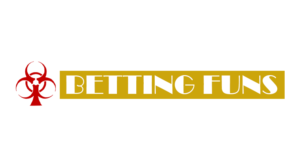In today’s era of artificial intelligence (AI), deep learning models continue to redefine how machines understand language and perceive images. However, the traditional approach of training models from scratch demands extensive data and computational resources. Transfer learning has emerged as a game-changing solution by leveraging pre-trained models to accelerate and enhance performance in natural language processing (NLP) and computer vision (CV). This concept has not only reduced training time and cost but also enabled outstanding results with limited data. If you’re exploring this space through a data scientist course, understanding transfer learning is fundamental to modern machine learning workflows.
What is Transfer Learning?
Transfer learning is a machine learning technique in which a model developed for a specific task is reused as the starting point for a model on a second task. It involves transferring knowledge gained from one domain (source task) and applying it to a related but different domain (target task). This is particularly useful when there’s a lack of large labelled datasets for the target task.
Instead of learning from scratch, transfer learning utilises pre-trained models—typically trained on massive datasets, such as ImageNet (for images) or large language corpora (for text). These models have already learned general patterns and features that are common across various tasks, making them highly adaptable.
Transfer Learning in NLP
Evolution of NLP Models
In the field of NLP, traditional approaches, such as the bag-of-words and TF-IDF models, have been largely replaced by deep learning models that can understand contextual relationships. The revolution began with word embeddings such as Word2Vec and GloVe, which were forms of transfer learning in themselves. However, the breakthrough came with transformer-based models.
Pre-trained Language Models
Modern NLP relies heavily on transformer architectures, such as BERT (Bidirectional Encoder Representations from Transformers), GPT (Generative Pre-trained Transformer), RoBERTa, and T5. These models are pre-trained on extensive text corpora such as Wikipedia and BookCorpus.
Once pre-trained, they can be fine-tuned with task-specific data for tasks such as sentiment analysis, question answering, summarisation, and more. Fine-tuning requires significantly less data and computing power than training a model from scratch, while still delivering high performance.
Real-world NLP Applications
- Customer Support Automation: Companies utilise pre-trained NLP models to analyse and categorise customer queries, facilitating faster responses through chatbots or helpdesk systems.
- Document Summarisation: Legal and medical institutions utilise fine-tuned language models to summarise lengthy documents.
- Language Translation: Services like Google Translate have improved performance by utilising large-scale, multilingual, pre-trained models.
A solid data science course in Bangalore will introduce these NLP applications using tools such as Hugging Face Transformers, spaCy, and TensorFlow.
Transfer Learning in Computer Vision
Foundations in CV Models
In computer vision, transfer learning typically involves using a pre-trained convolutional neural network (CNN) on a large dataset, such as ImageNet. Standard pre-trained models include VGGNet, ResNet, Inception, and EfficientNet.
These models are adept at extracting visual features such as edges, textures, shapes, and object parts. During transfer learning, the lower layers of a CNN (which capture generic features) are retained, and the upper layers (which are more task-specific) are fine-tuned for the target task.
Application Areas in CV
- Medical Imaging: With limited data available for rare conditions, pre-trained CNNs can detect anomalies in X-rays and MRIs effectively.
- Object Detection in Retail: Transfer learning enables the real-time identification of products on shelves, facilitating efficient inventory management.
- Autonomous Vehicles: Computer vision systems in self-driving cars use transfer learning to recognise road signs, pedestrians, and obstacles with high accuracy.
Midway through any comprehensive data scientist course, learners are often tasked with projects involving transfer learning in image classification, object detection, or facial recognition.
Advantages of Transfer Learning
- Reduced Training Time: Since models are already partially trained, only the last few layers need to be updated, leading to faster convergence.
- Lower Computational Costs: Utilising pre-trained weights reduces GPU resources and energy consumption.
- Higher Performance with Limited Data: Even small datasets can yield excellent outcomes when combined with robust, pre-trained models.
- Improved Generalisation: Transfer learning enables models to perform better on new tasks by leveraging prior knowledge.
- Accessible for Practitioners: Open-source frameworks, such as TensorFlow Hub, PyTorch Hub, and Hugging Face, make it easier to access and implement these models.
Challenges in Transfer Learning
Despite its benefits, transfer learning is not without challenges:
- Negative Transfer: If the source and target tasks are too different, performance might degrade.
- Overfitting: Even with tiny datasets, fine-tuned models can still overfit.
- Model Size and Deployment: Large pre-trained models can be resource-intensive and difficult to deploy in real-time systems.
- Bias and Fairness: Pre-trained models may inherit biases from their training data, which can impact fairness and ethical usage.
These issues are actively researched, and modern offerings often include practical guidance on mitigating such risks in real-world applications.
Conclusion
Transfer learning continues to redefine what’s possible in NLP and computer vision by democratising access to state-of-the-art deep learning models. It simplifies training, boosts accuracy, and makes AI development accessible to a broader audience. Whether it’s developing intelligent voice assistants or analysing medical images with high precision, transfer learning plays a pivotal role.
For aspiring professionals, mastering this approach is essential. A well-rounded course will delve into both the theory and hands-on implementation of transfer learning across domains. Enrolling in a data science course in Bangalore can equip you with the skills and tools necessary to excel in this rapidly evolving landscape, transforming academic knowledge into practical, impactful solutions.
ExcelR – Data Science, Data Analytics Course Training in Bangalore
Address: 49, 1st Cross, 27th Main, behind Tata Motors, 1st Stage, BTM Layout, Bengaluru, Karnataka 560068
Phone: 096321 56744

